COMPANY INSIGHT
Sponsored by TELEDYNE FLIR
FLIR Thermal Imaging Enables Autonomous Inspections of Mining and Trucking Vehicles in Australia
Pitcrew AI is a new system leveraging FLIR thermal imaging and AI technology to change the way trucking and mining vehicles are inspected. Using an AI algorithm trained on a library of thermal images, the system can spot problems in their early stages, before equipment is destroyed or vehicles cause deadly accidents on the road.
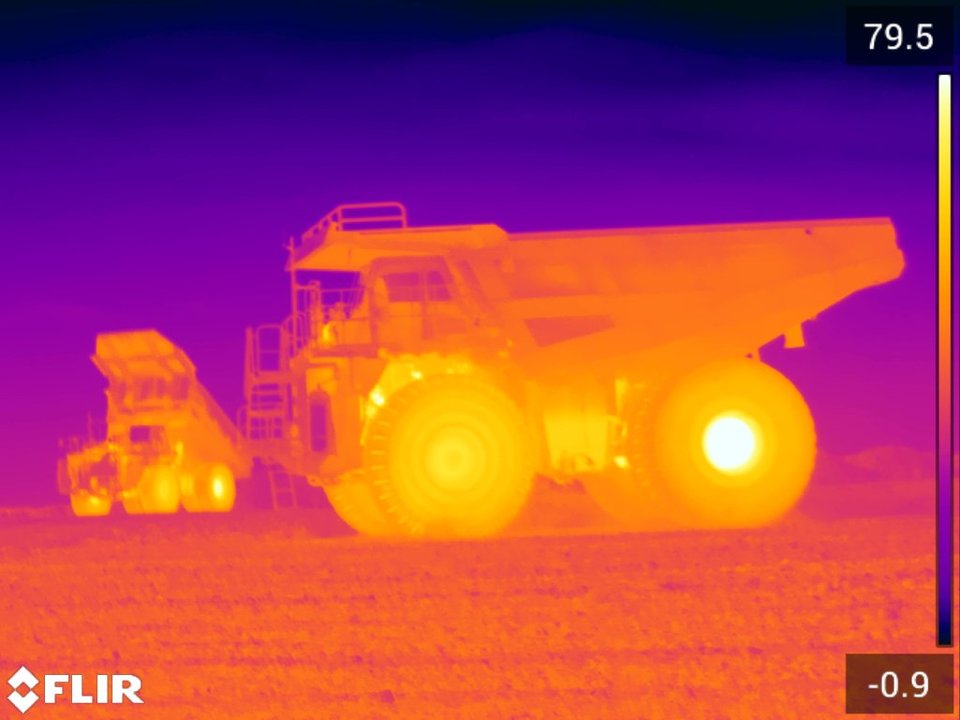
P
itcrew AI is a new system leveraging FLIR thermal imaging and AI technology to change the way trucking and mining vehicles are inspected. Using an AI algorithm trained on a library of thermal images, the system can spot problems in their early stages, before equipment is destroyed or vehicles cause deadly accidents on the road.
The system is built by Industrial Monitoring & Control (IMC), who developed the system to automate inspections of mining truck tires. This is critical to maintaining uptime for mining trucks, as even minor damage to a large mine tyre—such as a simple rock-cut—can result in complete tyre failure if not detected. OTR tyre failures pose a major safety and financial risk to mine operations. In a worst-case failure, a tyre fire can occur.
Tim Snell, Director at IMC, explains the value of developing a new and improved inspection system. “We've developed a whole bunch of different solutions over the years,” says Snell, “and this is one of those problems that has been known on large mining and quarry sites, but for many years there hasn't been a good solution for it.”
The Pitcrew AI system solution
IMC had known for a while that tyre separations could be detected using hand-held thermal imagers. Inspectors can use the cameras to detect hot spots caused by the separated materials of the tire rubbing against each other and creating friction. These hot spots are visible even if tires are caked in mud—the usual case with mining trucks—whereas a visual inspection for delamination requires the tire to be washed off in order to detect traces of a puncture in the top layer of the tire. “It can be detected if you were doing a detailed visual inspection,” Snell says, “but in reality, getting the inspections done in real time without downtime, this is the only effective technology that I'm aware of.”
Taking a step beyond hand-held imagers, the Pitcrew AI system is supplied as a rapid-deployment, self-contained, solar-powered skid that can be installed at the side of a haul road within a few hours. Controlled remotely by Pitcrew AI engineers, the system includes a military-grade thermal imaging camera and an advanced artificial intelligence machine vision processor. There are no changes to site operations required. The system can inspect every machine without requiring the vehicle to stop. Every vehicle that passes the system is inspected, 24/7-365 without any human intervention.
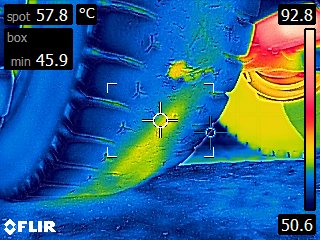

Hotspots on tires detected with thermal imaging.
Choosing the Right Thermal Imager
When it came to automating inspections, IMC decided to use a FLIR A615 Thermal Machine Vision camera and trained an AI model to identify the early stages of separation as they appeared in thermal.
One concern the Pitcrew team typically hears is “We’ve got a TPMS with tyre temperature sensors already, we don’t need this type of system”. The Pitcrew AI system is actually a perfect complementary technology to existing TPMS. A recent example was when hot oil from a haul truck turbo was ejected onto a tyre, causing a small tyre fire to start on the outer tread of the tyre. The internal TPMS registered a temperature rise on the burning tyre of less than two degrees above the adjacent tyre, as the thermal mass and volume of the tyre insulated the sensor from the fire on the surface layer. The Pitcrew AI system can detect surface layer thermal anomalies immediately. This information can be passed directly to TPMS platforms or tyre management software packages that are already in place.
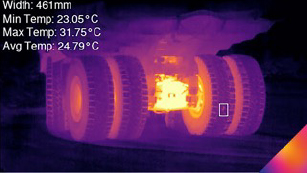
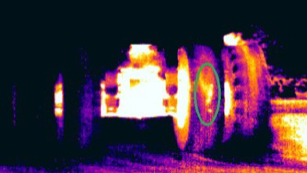
Pitcrew AI can be used to check hundreds of vehicles a day for tire separation.

Pitcrew AI system with FLIR camera in the field.
One concern the Pitcrew team typically hears is “We’ve got a TPMS with tyre temperature sensors already, we don’t need this type of system”. The Pitcrew AI system is actually a perfect complementary technology to existing TPMS. A recent example was when hot oil from a haul truck turbo was ejected onto a tyre, causing a small tyre fire to start on the outer tread of the tyre. The internal TPMS registered a temperature rise on the burning tyre of less than two degrees above the adjacent tyre, as the thermal mass and volume of the tyre insulated the sensor from the fire on the surface layer. The Pitcrew AI system can detect surface layer thermal anomalies immediately. This information can be passed directly to TPMS platforms or tyre management software packages that are already in place.
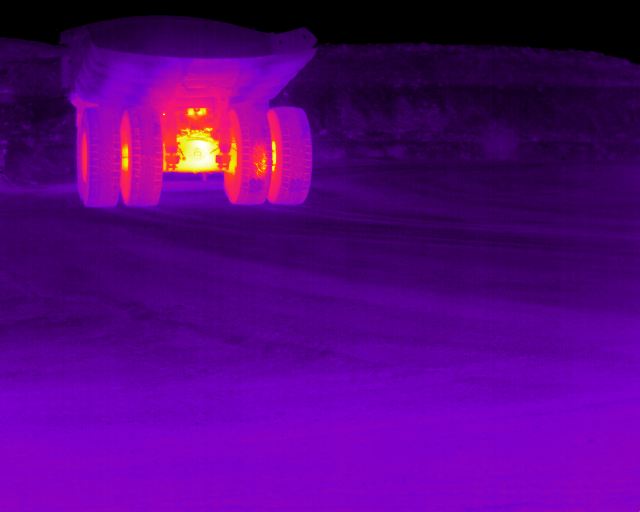
Pitcrew AI system is used to check for vehicle tire inspection
Going Beyond Tyre InspectionsChoosing the Right Thermal Imager
The underlying Pitcrew AI system was originally developed for roadgoing heavy vehicles, with a similar FLIR camera system already being used as a tool to automatically detect brake issues on cross-country trucks. This system provides authorities with compliance information and fleet operators with predictive maintenance data.
While tyres may be the frequent issue for mining haul trucks, brake issues are the problem that cross-country truckers usually run into. Autonomous thermal inspection systems at heavy-vehicle inspection stations and other stops along the road can alert road authorities to the early indications of brake failure and allow for targeted rather than random inspections. In Australia, brake failures on trucks are implicated as a contributing factor in nearly 40 percent of all truck accidents, making it a critical issue to address.
Summary of the system:
- A solution for the mining industry in the Industry 4.0 era, Pitcrew AI is an IIoT solution that leverages emerging technology including thermal imaging, artificial intelligence and machine learning
- Improves mine safety through early hot tyre detection
- Increases mine productivity by reducing unplanned fleet downtime
- Reduces tyre costs by identifying repairable damage very early, help to assist business environmental and sustainability goals
- Requires no changes to site workflow; the system sits at the side of the haul road and operates 24/7-365 without any human intervention
- Does not disrupt or impact production during installation
Founded in 1978, FLIR Systems is a world-leading industrial technology company focused on intelligent sensing solutions for defense, industrial, and commercial applications. FLIR Systems’ vision is to be “The World’s Sixth Sense, creating technologies to help professionals make more informed decisions that save lives and livelihoods.
